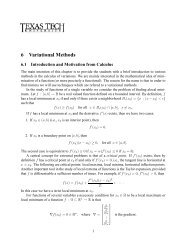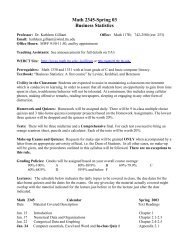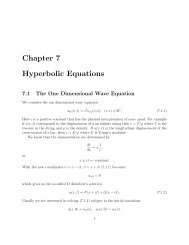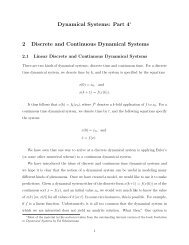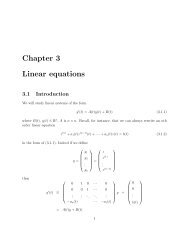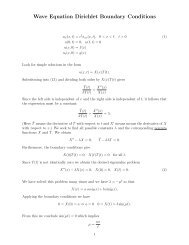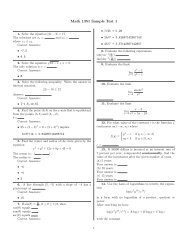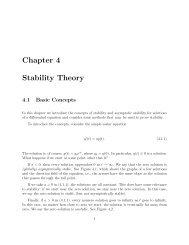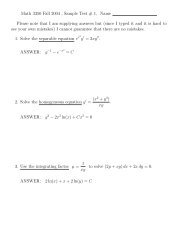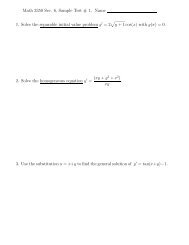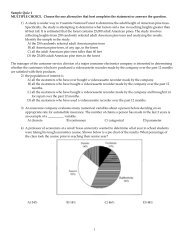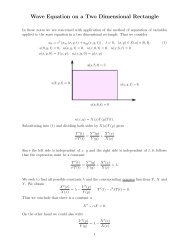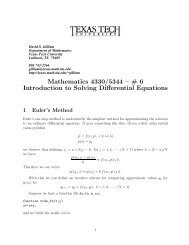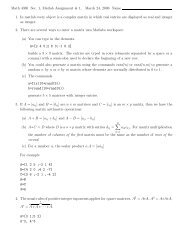Chapter 6 Partial Differential Equations
Chapter 6 Partial Differential Equations
Chapter 6 Partial Differential Equations
Create successful ePaper yourself
Turn your PDF publications into a flip-book with our unique Google optimized e-Paper software.
6.2. LINEAR AND QUASILINEAR EQUATIONS OF FIRST ORDER 21<br />
Example 6.2.13. Let us now consider an example in which data is prescribed on characteristics.<br />
In this linear example we seek a function u = u(x, y) such that<br />
We first seek solutions of<br />
subject to<br />
Thus we obtain<br />
dx<br />
dt = x,<br />
x ∂u<br />
∂x + y ∂u<br />
∂y = u + 1 (6.2.14)<br />
u(x, x) =x 2 . (6.2.15)<br />
dy<br />
dt = y,<br />
du<br />
dt = u +1,<br />
x(s, 0) = s, y(s, 0) = s, u(s, 0) = s 2 .<br />
x = se t , y = se t , u = s 2 e t + e t − 1.<br />
In this example it is not possible to solve for s and t in terms of x and y. Not that A(x, y) =<br />
(x, y) and the characteristic manifold<br />
Char (x,y) (L) ={ξ =(ξ 1 ,ξ 2 ) ≠0:A(x, y) · ξ =0}.<br />
We note that the initial curve S in this case is x = y with constant normal vector ν =(1, −1).<br />
In the present case we see that<br />
so the curve is a characteristic.<br />
A(x, x) · ν = x − x =0<br />
Within the context of these examples in R 2<br />
solvability condition (6.2.7) as<br />
we can restate Theorem 6.2.8 with the<br />
Theorem 6.2.14. Suppose a(x, y, u), b(x, y, u), c(x, y, u) are C 1 in Ω ⊂ R 3 , C 0 is C 1 initial<br />
curve given by (x 0 (s),y 0 (s),u 0 (s)) ⊂ Ω and<br />
( )<br />
a(x0 (s),y<br />
det<br />
0 (s),u 0 (s)) x ′ 0(s)<br />
b(x 0 (s),y 0 (s),u 0 (s)) y 0(s)<br />
′ ≠0.<br />
Then there exists a unique C 1 solution of<br />
a(x, y, u)u x + b(x, y, u)u y = c(x, y, u),<br />
with<br />
u(x 0 (s),y 0 (s)) = u 0 (s).



